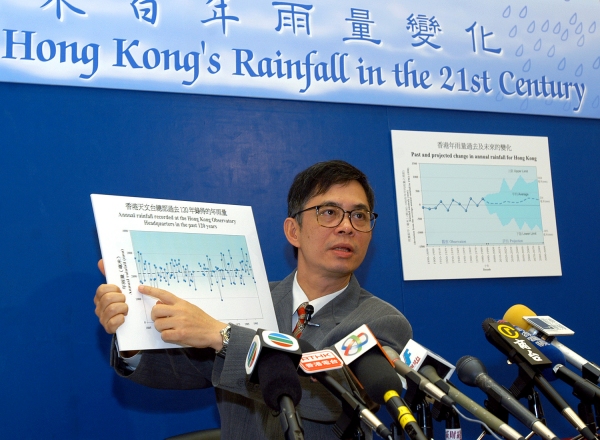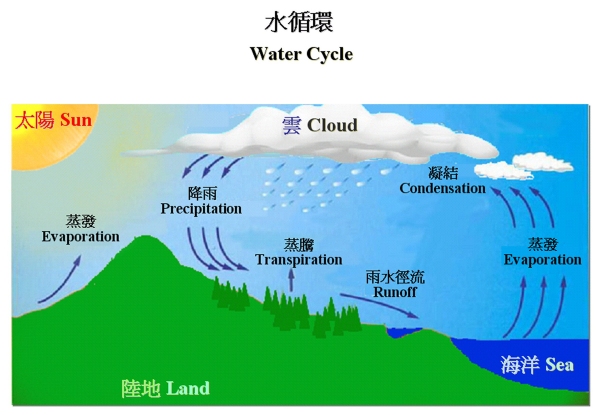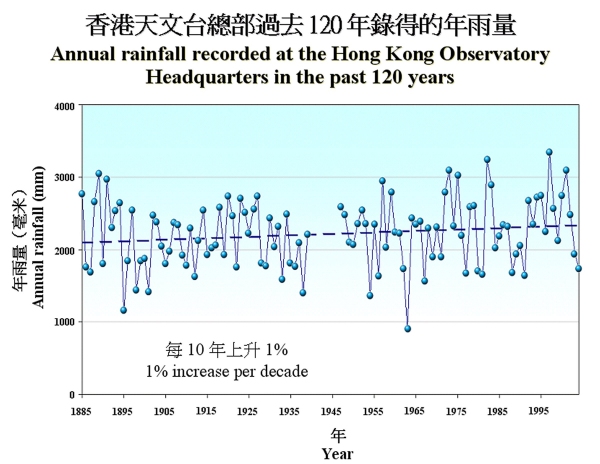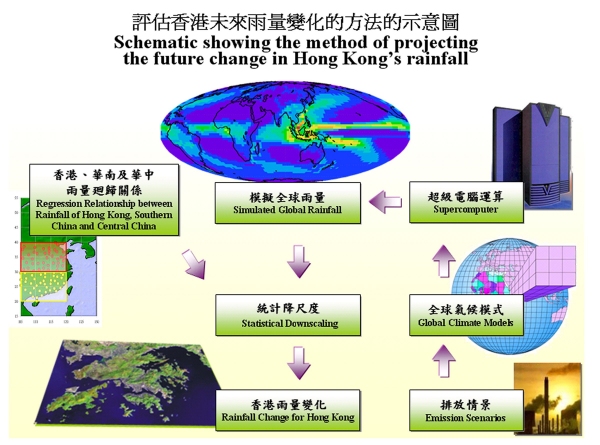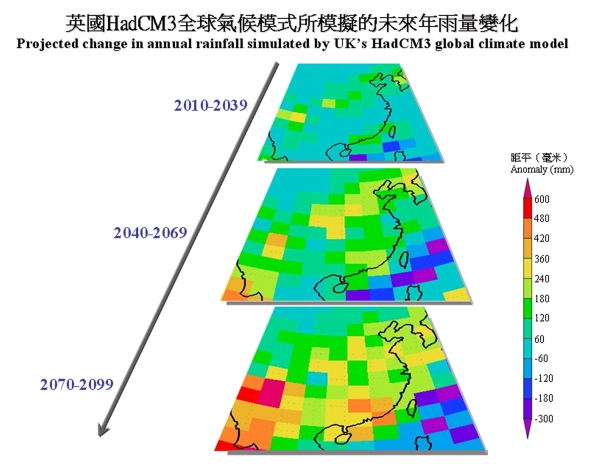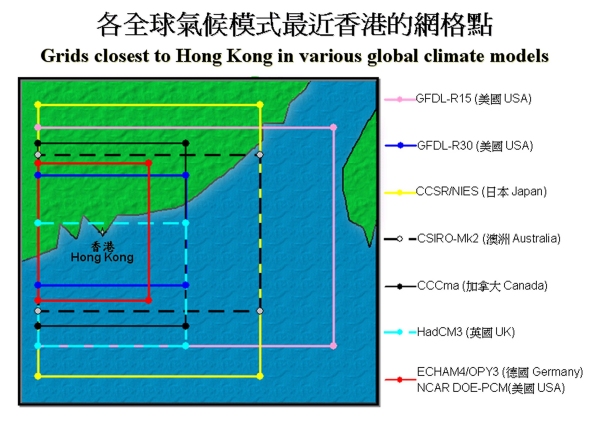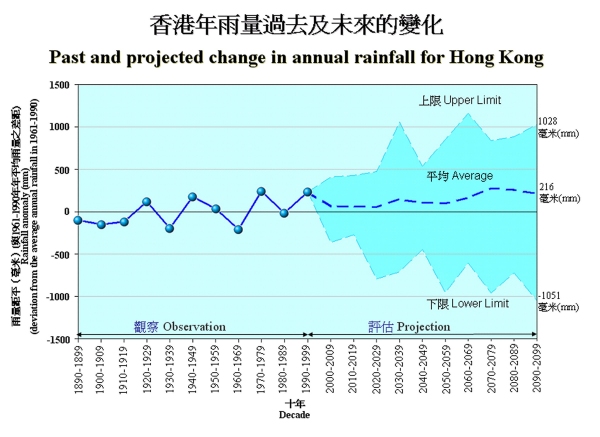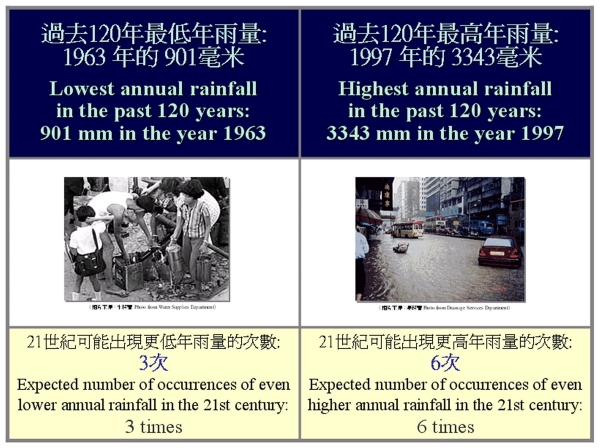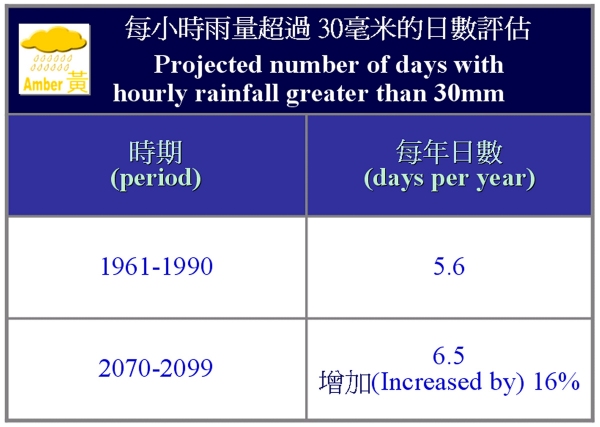Projected Change in Hong Kong's Rainfall in the 21st Century
Projected Change in Hong Kong's Rainfall in the 21st Century (26 August 2005)
|
The Hong Kong Observatory announced today (26 August 2005) the results of its recent study on the projected change in Hong Kong's rainfall in the 21st century. The study found that under the influence of global warming, annual rainfall in Hong Kong would increase at a rate of about 1% per decade in the 21st century, about the same rate as in the past 120 years. This trend is in line with the conclusion reached by the Intergovernmental Panel on Climate Change (IPCC) in its 2001 assessment report that as the hydrological cycle intensifies in a warmer world, global average precipitation would increase in the 21st century. Long-term change in rainfall is a factor for consideration in the planning of disaster mitigation. Under the anticipated increasing rainfall trend, in the last 10 years of this century, that is, in the years 2090 to 2099, the average annual rainfall at the Hong Kong Observatory Headquarters would be about 2430 mm, or 216 mm more than the 1961-1990 average of 2214 mm. Mr. Yeung explained that the present study utilized the results of supercomputer simulations of future climate made by major climate centres around the world. These centres in the United States, Canada, Britain, Germany, Australia and Japan had carried out simulations of the future climate including rainfall using global climate models forced with different greenhouse gas emission scenarios. The results of these simulations were assimilated into the assessment report of the Intergovernmental Panel on Climate Change (IPCC) of 2001. The greenhouse gas emission scenarios used in the computer simulations reflected the various assumptions made by experts on the future population, economy, technology, energy and land use patterns of the world. They ranged from sustainable scenarios involving emission controls to rapid economic growth and fossil fuel intensive scenarios. Projections of future rainfall changes in Hong Kong were made by the Hong Kong Observatory using the results of simulations made by global climate models under the various emission scenarios together with observed rainfall in Hong Kong, southern China and central China through a technique called statistical downscaling. In the 21st century, the number of days with heavy rain is also likely to increase. Mr. Yeung said, "From the 30-year period 1961-1990 to the last 30 years of this century, that is 2070-2099, the number of days in a year with hourly rainfall exceeding 30 mm (the rainfall criterion for issuing the Amber Rainstorm Warning) will increase from five and a half to six and a half."
|
